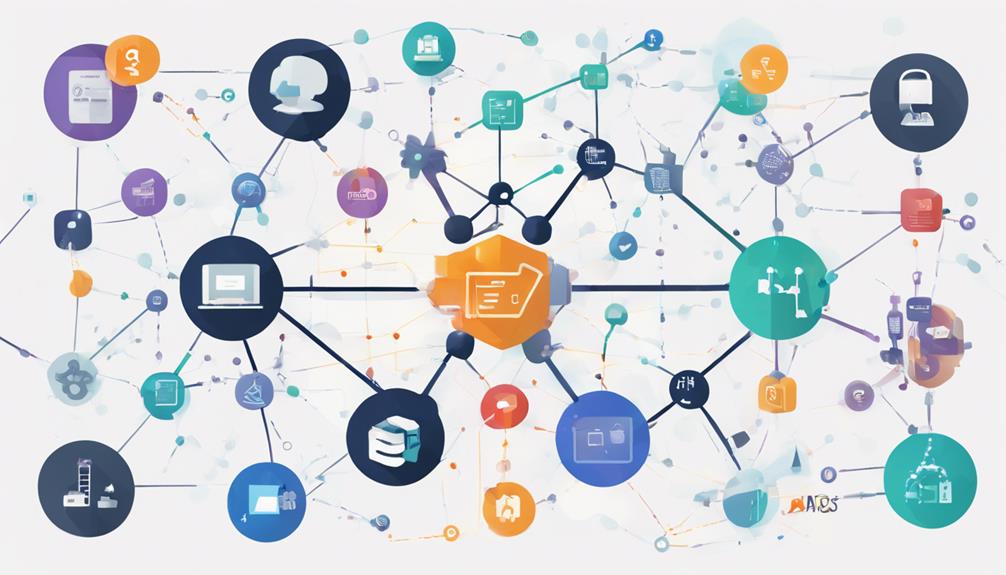When venturing into the realm of B2B data enrichment, you might not be aware of the intricate balance required between data quantity and quality. Understanding how to effectively implement data enrichment strategies involves more than just acquiring additional data. It’s about honing in on the right techniques and tools to ensure that your data is not just abundant but also accurate and actionable. By navigating this landscape with precision and purpose, you can unlock the full potential of enriched data for your business.
Identify Data Needs
To successfully implement B2B data enrichment, the first crucial step is to identify your data needs clearly and comprehensively. This process involves understanding the importance of data validation and data accuracy. Data validation ensures that the information collected is accurate, complete, and reliable. It involves checking for inconsistencies, errors, and duplications within the data set. By validating your data, you can enhance its quality and trustworthiness, leading to better decision-making.
Similarly, data accuracy is vital in ensuring that the information you gather is precise and up-to-date. Inaccurate data can result in flawed insights and misguided strategies. By prioritizing data accuracy, you can improve the effectiveness of your B2B data enrichment efforts and maximize the value derived from your data sources.
Therefore, by focusing on data validation and accuracy when identifying your data needs, you lay a strong foundation for successful B2B data enrichment initiatives. This initial step sets the stage for acquiring high-quality data that drives meaningful business outcomes.
Define Target Audience
To effectively implement B2B data enrichment, you must first identify your ideal clients by understanding their specific needs and preferences. By creating detailed buyer personas, you can gain insights into the motivations and pain points of your target audience. Segmenting your target markets based on these personas enables you to tailor your marketing strategies for maximum impact.
Identify Ideal Clients
Identifying ideal clients is a crucial step in defining your target audience for B2B data enrichment. To begin, ideal client profiling involves creating detailed descriptions of the types of companies that are most likely to benefit from your products or services. This process includes analyzing factors such as industry, company size, revenue, and geographical location to narrow down your target market.
Target market identification is another vital aspect of identifying ideal clients. By understanding the specific needs, pain points, and preferences of your target market, you can tailor your B2B data enrichment efforts to resonate with potential clients effectively. This involves conducting thorough market research, competitor analysis, and customer surveys to gather valuable insights that will guide your data enrichment strategy.
Understand Buyer Personas
Understanding buyer personas is a fundamental aspect of defining your target audience for B2B data enrichment. Market research plays a crucial role in this process by providing insights into the characteristics, behaviors, and preferences of your potential customers. By conducting thorough market research, you can gather valuable data that informs customer profiling, helping you create detailed buyer personas.
Customer profiling involves segmenting your target audience based on factors such as industry, company size, job roles, and purchasing behavior. This segmentation allows you to tailor your marketing strategies and content to resonate with specific buyer personas. Understanding the unique needs and pain points of each persona enables you to deliver personalized experiences that drive engagement and conversions.
Segment Target Markets
When segmenting target markets for B2B data enrichment, it is crucial to define your target audience with precision. Market segmentation and customer profiling are essential steps in this process to ensure that your data enrichment efforts are effective and yield optimal results. To segment your target markets successfully, consider the following:
- Audience Segmentation: Identify specific characteristics and traits that define your ideal customers. This could include industry, company size, location, or even specific pain points that your product or service solves.
- Market Analysis: Conduct thorough market research to understand the landscape in which your target audience operates. Look into market trends, competitors, and any gaps that your business can fill.
- Data-Driven Decisions: Utilize data analytics and insights to continuously refine and update your target market segments. Regularly analyze the performance of your data enrichment strategies to make informed decisions and adjustments.
Choose Reliable Data Source
When selecting a data source for B2B data enrichment, it is crucial to consider the reliability criteria. The accuracy, freshness, and relevance of the data should be your top priorities. By choosing a reliable data source, you can ensure that your data enrichment efforts are based on trustworthy information.
Data Source Selection
Selecting a reliable data source is a critical step in implementing B2B data enrichment. Your success in enriching your data hinges on the accuracy and quality of the data acquired. When choosing a data source, consider the following:
- Data Accuracy: Ensure that the data you acquire is accurate and up-to-date. Inaccurate data can lead to costly mistakes and hinder your decision-making processes.
- Data Acquisition: Look for data sources that offer multiple acquisition methods. This flexibility allows you to choose the most suitable method for your specific needs, whether it’s through APIs, batch processing, or real-time data streams.
- Data Quality: Prioritize data sources that have a reputation for providing high-quality data. Quality data is essential for making informed business decisions and driving successful B2B interactions.
Reliability Criteria
To ensure the success of your B2B data enrichment endeavor, the reliability criteria for selecting a data source play a pivotal role in the accuracy and quality of the enriched data you aim to acquire. When choosing a data source, two critical factors to consider are data accuracy and data coverage. Data accuracy refers to how precise and error-free the information provided by the source is. Opting for a data source with a reputation for high accuracy can significantly enhance the quality of your enriched data. On the other hand, data coverage pertains to the extent to which the data source encompasses relevant information related to your target audience or market. Selecting a data source with comprehensive coverage ensures that you are not missing out on crucial details that could impact the effectiveness of your B2B data enrichment efforts. By prioritizing reliability criteria such as data accuracy and data coverage in your selection process, you can optimize the outcomes of your data enrichment initiatives.
Collect Relevant Data
To effectively implement B2B Data Enrichment, the foundational step of “Collecting Relevant Data” plays a crucial role. Ensuring data accuracy and validation are essential in this process to lay a strong foundation for subsequent enrichment activities.
- Identify Key Data Sources: Begin by pinpointing the primary sources of data within your organization. This could include CRM systems, marketing automation platforms, or external databases.
- Establish Data Collection Protocols: Set clear guidelines for how data should be collected, stored, and updated. Consistent protocols help maintain data accuracy and streamline the enrichment process.
- Utilize Automation Tools: Leverage automation tools to streamline data collection processes. Automated data capture not only saves time but also reduces the risk of manual errors, enhancing data accuracy.
Analyze Gathered Data
When analyzing the gathered data, your primary objective is to extract valuable insights that can drive strategic decision-making within your organization. To achieve this, it is essential to ensure data quality and accuracy. Utilize data visualization tools to represent the information in a clear and concise manner. Visualizing data through charts, graphs, and dashboards can help identify patterns, trends, and outliers that may not be immediately apparent from raw data.
In addition to data visualization, consider incorporating predictive analytics into your analysis. Predictive analytics leverages historical data to forecast future trends and outcomes, enabling you to make informed decisions based on data-driven projections. By combining predictive analytics with data visualization, you can gain a comprehensive understanding of your data and its potential implications for your business.
Apply Enrichment Tools
How can you effectively enhance the quality and depth of your B2B data analysis? Implementing enrichment tools is crucial to achieve accurate and insightful results. By leveraging these tools, you can enrich your existing data with additional valuable information, thereby improving data accuracy and unlocking a multitude of enrichment benefits.
Markdown bullet list:
- Data Accuracy: Enrichment tools help enhance the accuracy of your B2B data by filling in missing information, updating outdated records, and standardizing data formats.
- Enrichment Benefits: These tools provide enriched data that goes beyond basic details, offering insights into customer preferences, firmographics, market trends, and more.
- Efficiency: Enrichment tools streamline the data enhancement process, saving time and resources while ensuring that you have comprehensive and up-to-date information for analysis.
Validate Enriched Data
Enhancing the quality of your enriched B2B data is essential for ensuring the reliability and effectiveness of your analysis. Validating enriched data is crucial to maintaining data accuracy and understanding the true enrichment impact on your business insights. To validate enriched data effectively, start by comparing the enriched data against the original dataset to identify any discrepancies. Conduct thorough checks on key data points to ensure consistency and accuracy post-enrichment. Utilize data validation tools and techniques to verify the correctness and completeness of the enriched data.
Frequently Asked Questions
How Can Data Enrichment Improve Lead Generation?
To boost lead generation, data enrichment refines customer profiles for targeted campaigns. By supplementing existing data, you achieve improved personalization, enhancing engagement and conversion rates. Elevate your strategies with enriched insights.
What Measures Can Be Taken to Ensure Data Privacy?
To ensure data privacy, implement data encryption for sensitive information. Regularly conduct security audits and compliance monitoring. Develop and enforce strict privacy policies within your organization. These measures help safeguard data and maintain confidentiality, fostering trust with customers.
Are There Any Legal Regulations to Consider for Data Enrichment?
When considering legal compliance for data enrichment, understand regulations like GDPR and CCPA. Ethical considerations are vital too. Prioritize customer consent and data transparency. Stay informed on evolving laws to maintain compliance and trust.
How Often Should Enriched Data Be Updated?
To maintain data accuracy, update enriched data regularly. The updating frequency depends on your business needs and the rate of change in your data sources. Consistent updates ensure reliable information for informed decision-making and operational efficiency.
What Are the Potential Risks of Relying Solely on Enriched Data?
Relying solely on enriched data poses significant risks to your business. Over reliance on this data may lead to inaccuracies and compromises in data quality, especially if not balanced with diverse and reliable data sources.




